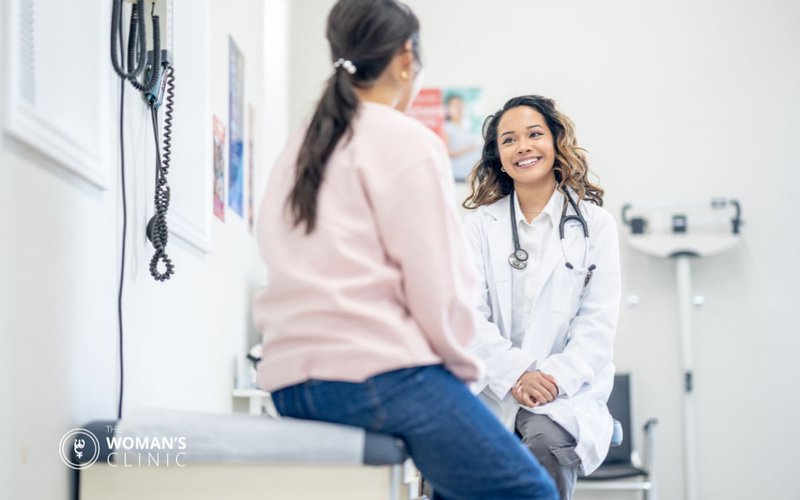If you're getting a Pap smear for the first time, you're not alone—and it's completely normal to feel unsure. But here's the truth: this quick test could save your life. It helps detect the early signs of cervical cancer, often before symptoms appear. We’ll walk you through each step, answer common questions, and help you feel more ready and at ease. Let's talk about what to expect—and why it matters so much.
Key Takeaways:
- Pap smears detect early cervical cell changes that can help prevent cancer.
- Start Pap testing at age 21, even if you've never had sex.
- In your 20s, test every 3 years if results are normal; co-testing (Pap + HPV) starts at 30.
- HPV tests detect the virus that may cause abnormal cells; Pap tests look for cell changes.
- Pap smears are quick, usually painless, and may cause mild pressure or spotting.
- Avoid sex, douching, and vaginal products 48 hours before the test.
- Light spotting and mild cramps after the test are normal.
- Abnormal results rarely mean cancer; most are mild and observed over time.
- Delaying a Pap test increases the risk of detecting cervical cancer too late.
- Emotional preparation (breathing, support person, communication) can reduce anxiety.
Pap Smear First Time: What To Expect, Why It Matters, and How to Prepare
Stepping into your first gynecology appointment can feel intimidating—but understanding what to expect during your first Pap smear can ease that anxiety and empower you to take control of your health. This simple, quick test plays a vital role in preventing cervical cancer, and knowing when and why to begin screening can make all the difference. Whether you've just turned 21 or you're preparing for your very first gynecology visit, learning about the Pap test helps build confidence and peace of mind. Let’s walk through everything you need to know, from preparation to results and beyond.
Understanding Its Purpose and Importance
The Pap smear is a screening tool that checks for early signs of cervical cancer. It works by detecting abnormal cells on the cervix that, over time, could develop into cancer if left untreated. Even though you might feel perfectly healthy, cervical cell changes often occur silently, without symptoms. That’s why regular testing is so essential—especially starting with your Pap smear first time at age 21.
During the test, your provider gently collects cells from your cervix using a soft brush. These cells are then sent to a lab to check for signs of unusual changes. If caught early, these abnormalities can be treated long before they turn into something serious. According to the Centers for Disease Control and Prevention, Pap tests have significantly reduced deaths from cervical cancer since their introduction.
When to Start and How Often to Repeat
The recommended age for your first Pap smear is 21, regardless of sexual activity. Even if you haven’t had sex, risk factors like HPV exposure through non-penetrative contact, smoking, or a weakened immune system can still apply. Starting too early can sometimes lead to unnecessary treatment of infections that would clear on their own, which is why national guidelines—updated regularly—continue to support age 21 as the best starting point.
Once you've had your first test, follow-up depends on your results:
- If your Pap test is normal, you only need another one every three years throughout your 20s.
- In your 30s, your provider might recommend co-testing, which combines the Pap test with an HPV test. If both results are clear, you may only need screening every five years.
- After age 65, your need for further tests depends on your past results and overall health.
Even if you’ve received the HPV vaccine, Pap testing is still necessary. The vaccine doesn’t protect against all cancer-causing HPV strains, so screening remains an essential part of lifelong care.
Preparing For Your Pap Smear First Time: What To Know Before You Go
Preparation begins a few days before your appointment. For the most accurate results:
- Avoid vaginal intercourse, douching, or using creams or medications inside the vagina for 48 hours before your test.
- Try to schedule your appointment when you're not on your period—especially if your flow is heavy.
When dressing for your visit, aim for comfort. Soft pants or a flowy skirt are easy to remove, and your clinic will provide a gown for modesty. Shaving or waxing is not necessary. Healthcare providers are not concerned about body hair, and it won’t affect your test results.
If you're nervous, practice deep breathing or bring someone you trust to wait with you. Let the clinic staff know if you're anxious—they may offer calming music, a smaller speculum, or take extra time to explain each step. The Mayo Clinic offers great guidance to help you prepare for your first pelvic exam.
What Happens During the Pap Smear
Once you’re in the exam room, your provider will explain each step and give you a chance to ask questions. You’ll undress from the waist down and cover yourself with a sheet or gown. Then, you’ll lie on your back with your feet in footrests or stirrups.
A tool called a speculum is gently inserted into the vagina. It opens the vaginal walls just enough to allow a clear view of the cervix. A small, soft brush (similar to a mascara wand) is used to collect a sample of cervical cells. This part takes only a few seconds.
You may feel some pressure or a brief pinch, but it shouldn’t hurt. Once the sample is collected, the speculum is removed, and the test is complete. You can then get dressed and continue your visit.
Sometimes, your provider may also perform a pelvic exam, which involves feeling the uterus and ovaries by touch. This is separate from the Pap test and helps assess your overall reproductive health.
Does the Pap Smear Hurt the First Time?
Most people wonder if the first Pap smear will be painful. The good news is that the test usually causes only mild discomfort or pressure. For those who haven’t had penetrative sex, the muscles may be tighter, making the exam feel more intense. However, providers can use smaller tools and go slowly to ensure your comfort.
The brush used is soft, and many people feel nothing at all during the cell collection. If anything feels painful, you have the right to ask the provider to pause or stop. You're in control throughout the entire process.
Navigating Your First Gynecology Visit for a Pap Test
If this is your first-ever visit to a gynecologist, you're not alone. Many people feel nervous before their Pap smear the first time, but compassionate providers are there to support you. You can request a female provider, bring a support person, and ask as many questions as you need.
During your intake, your provider may ask:
- When your last period started
- Whether your periods are regular or painful
- If you’ve had sex or use birth control
- Any symptoms like unusual discharge or itching
These questions help tailor your care, but you can always choose not to answer something if it feels too personal.
The Woman’s Clinic in Little Rock offers a gentle, informed approach to gynecology, ensuring your first visit feels safe and supportive.

Coping with Anxiety Before or During Your First Pap Smear
Feeling anxious is normal, especially before your first ever Pap smear. However, there are simple ways to manage this stress:
- Practice deep, rhythmic breathing
- Let your provider know you’re nervous so they can adjust their pace
- Use calming tools like music or visualization
- Bring a trusted person to stay with you or wait nearby
Remember, you can stop the exam at any point. You are not obligated to continue if something feels wrong. Taking care of your mental health during the process is just as important as the test itself.
What Happens After Your First Pap Test
After your Pap smear the first time, you might notice light spotting or mild cramping. This is normal and usually goes away within a day. Avoid using tampons or having vaginal intercourse for 24–48 hours to let your cervix recover.
Your results typically arrive within 1–3 weeks. You’ll get them by phone, mail, or through your clinic's patient portal. If you don’t hear back, it’s okay to follow up.
Understanding Pap Smear Results
Here’s a breakdown of possible outcomes:
- Normal: No abnormal cells found. You can wait until your next scheduled screening.
- ASC-US: Slightly unusual cells; usually followed by an HPV test.
- Low-Grade SIL: Early cell changes, often caused by HPV. May not require immediate treatment.
- High-Grade SIL: More serious changes that need closer monitoring or treatment.
- Atypical Glandular Cells: Rare, but may need further testing.
- Carcinoma Cells: Indicate possible cancer. Your doctor will act immediately.
Sometimes, results are inconclusive or unclear—often due to a small sample or testing during menstruation. Your provider will let you know if a repeat test is needed.
Learn more about abnormal results from the American College of Obstetricians and Gynecologists.
Risks of Delaying Your First Pap Smear
Delaying your Pap smear first time may feel easier in the short term, but it can lead to serious health risks. Without screening, abnormal cells may go undetected and develop into cancer over time. Early detection allows for simpler, more effective treatment.
Even if you're in your 30s and haven't had a test yet, it's not too late to start. Your provider may recommend both a Pap and HPV test to establish a safe baseline. This step takes just a few minutes but offers long-term peace of mind.
Your First Pap Smear Is a Step Toward Lifelong Wellness
Choosing to get your Pap smear first time is a powerful act of self-care. It shows that you value your health, your future, and your well-being. Although it may feel uncomfortable at first, it becomes easier with time—and your care team is here to help every step of the way.
If you're still unsure where to begin, schedule a consultation with a provider who makes you feel comfortable. The Woman’s Clinic offers compassionate care that puts you at ease, from first visits to ongoing support.
Start Your Cervical Health Journey Today
Take the First Step Toward Long-Term Wellness
If you're approaching your Pap smear for the first time, know that you're not alone. With the right provider and preparation, your experience can be smooth, supportive, and empowering. Learn more about what to expect from your gynecology visit, or contact our team at The Woman’s Clinic to schedule your appointment today. Your health is worth it—now and always.

